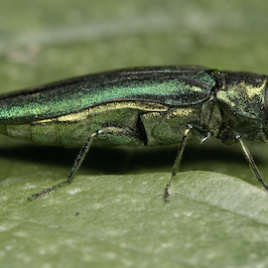
Durum wheat is grown in three Canadian provinces and is exported to more than 40 countries around the world. Canada’s domestic pasta industry uses more than 300 000 tonnes of durum a year. (Information from the Canadian Wheat Board and Pasta Canada. (Photo credit: Aske Holst, flickr.com)
Researchers may have found the key to protecting durum wheat from Fusarium Head Blight (FHB), which leaves it unsuitable for human consumption or livestock feed. Common wheat has been bred to develop a resistance to this fungal disease, however durum wheat, which is used to create pastas, has no defence against it.
Researchers analyzed two strains of wheat, a highly resistant common wheat and a highly susceptible durum wheat. They found that there were significant differences between the two plants in the composition and structure of the cell wall, which allows the resistant wheat to hold off an FHB infection.
This discovery opens the door to breeding new FHB-resistant strains of durum wheat through. cross-breeding or genetic modifications.
Original research paper published in BioMed Plant Biology on January 18, 2014.
Names and affiliations of selected authors


